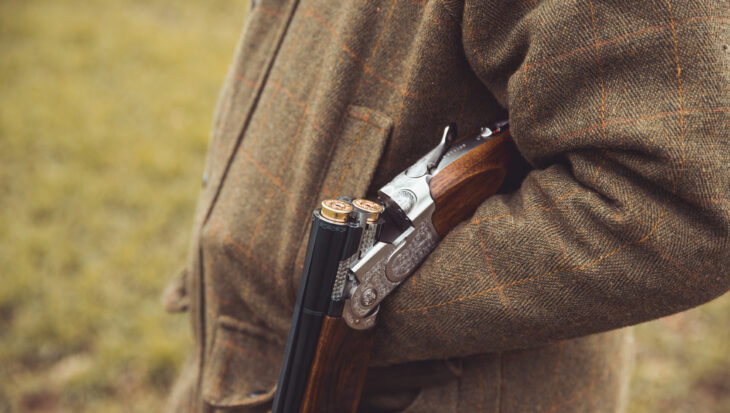Ban on the use of lead shot – finally!
Posted 10 Jul 2025

Posted on the 13th November 2008
A new study by the Game and Wildlife Conservation Trust (GWCT) concludes that only 34 per cent of pheasant nests in the wild are successful. (A successful nest is considered to be one where at least one chick survives and leaves the nest.(1)) The study also calculates that 43 per cent of pheasants hatched in the wild are taken by predators and 25 per cent of that 43 per cent are killed by foxes and corvids (mainly carrion crows). This remarkably small sample of 450 nests examined over 15 years (30 per year) follows the usual GWCT (formerly Game Conservancy Trust) pattern of publishing scientific data that supports game shooting and its controversial methods of predator control.
The Shooting Times2 reports:
‘The results reveal that, along with many other ground-nesting birds such as lapwings, skylarks, corn buntings and yellowhammers, pheasants suffer from high levels of nest predation – a fact keepers are already familiar with.’
A spokesman for the National Gamekeepers’ Organisation was unsurprised by the findings:
‘This study confirms what most keepers will always have believed – that predators take game birds…..There is of course a need to prove such matters beyond reasonable doubt to politicians and the conservation authorities, so the official publication of the research is welcome.’
So what does the research prove? First, it is useful to give some context to the report and its authors. The GWCT is a registered charity with trustees and council members – some of whom draw an income from estates offering game shooting. It also has a Chief Executive in the shape of Teresa Dent who, when sharing a platform with the Countryside Alliance, called not just for the defence of game shooting but for its active promotion.2 And bear in mind that this is an industry that every year mass produces 35 million pheasants so that they can be released and shot for pleasure. In conducting ‘scientific’ research into this industry, the GWCT has consistently supported the purpose breeding of birds for ‘sport shooting’, while broadly endorsing current farming and killing methods.
It is also important to note that, while 35 million pheasants are released every year, the new report estimates that there were only 1.8-1.9 million wild or feral female pheasants in the UK countryside in 2000.4 The majority of those who were previously released had been shot, or they starved to death, or they were killed by traffic or by predators. Amongst the survivors, mating and breeding is generally less successful than for truly wild birds.
Selectively bred to be reared in confinement, their institutionalised start renders released or feral birds disorientated and vulnerable in the wild, compared with genuinely wild birds. This is supported by a 2002 Game Conservancy Trust study by the lead author of the latest report – Roger Draycott. In his 2002 dissertation he declared that, though ‘population densities of pheasants were positively influenced by supplementary feeding, breeding success was still lower than that of wild birds. Clearly, there are behavioural and physiological deficiencies which pre-dispose released pheasants to poor performance in the wild.’5
Studies initiated by the shooting industry are published in support of its own activities of which the ruthless extermination of any creature who gets in the way is a major part. In reality, most of the scores of millions of birds released never get the opportunity to make a nest. The number of wild or feral pheasant hens available for nesting is only 5 per cent of the total. And now we are told by the GWCT that only 34 per cent of pheasant clutches hatch successfully.
Of those who fail, it is reported that 43 per cent fail to hatch because of predators. But foxes and corvids account for just a quarter of that group. Given that the wild population of female pheasants is just 1.8 million, the new GWCT figures point to the number of nests destroyed by foxes or corvids as being short of 128,000. But it is not likely that every wild or feral pheasant will be successful at making a nest. We already know that feral pheasants are likely to be unsuccessful. If half of the female pheasants were successful the fox and corvid destroyed nests would be reduced to less than 64,000. This must be viewed against the destruction of the shooting industry, which annually mass-produces 35 million pheasants, 20 million of whom die before they can be shot. Against this enormous deliberate loss, the number of wild and feral nests destroyed by predators is insignificant.
There is nothing revealing to politicians and conservation authorities in this GWCT scientific study, except that it is not the wild animals competing for habitat and diet who are responsible for the major losses of game birds but the shooting industry itself. There is no evidence either that the comparatively small number of wild or feral pheasants available for shooting makes any notable difference to the economics of game shooting.
Posted 10 Jul 2025

Temperatures are rising and it’s time to get outdoors, enjoy the weather and tuck into some delicious vegan food! Thanks to an abundance of plant-based options now available, there’s an alfresco option for every tastebud...
Posted 09 Jul 2025
